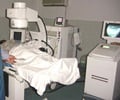In a break-through research, Harvard Stem Cell Institute (HSCI) researchers at Brigham and Women’s Hospital (BWH) in Boston, have successfully modelled genetic kidney disease in lab-grown, mini-kidneys by combining gene-editing techniques with stem cell technology. The findings of the study were published in the journal Nature Communications.
This first of its kind research paves way for personalized drug discovery for kidney disease.Kidneys are the two bean shaped organs of our body which perform important function of filtering extra water and wastes out of blood and also help control blood pressure. Dialysis and kidney transplantation are few of the options for treating kidney failure, but they are expensive and could cause harmful side effects besides affecting the patient’s quality of life.
Lead author, Benjamin Freedman, who is an assistant professor of medicine in the Division of Nephrology at the University of Washington and a UW Medicine researcher, commented, "A major unanswered question was whether we could re-create human kidney disease in a lab petri dish using this technology. Answering this question was important for understanding the potential of mini-kidneys for clinical kidney regeneration and drug discovery."
Freedman and his colleagues re-created human kidney disease by using the gene-editing technique called CRISPR. Mini-kidney organoids, which are the three-dimensional mini-organs, were grown in laboratory petri dishes using genome editing.
The mini-kidney organoids contain tubules, filtering cells and blood vessels to transport chemicals and respond to toxic injury just like how kidneys function in normal people. They were grown from pluripotent stem cells, which basically are stem cells which have the ability to develop into any type of organ in the body. When treated with certain chemical mixtures, they grow into structures which look like tiny kidneys.
The scientists engineered mini-kidneys with specific genetic diseases such as polycystic kidney disease and glomerulonephritis using gene editing tools. It was seen that the organoids developed characteristics of these diseases.
The organoids with mutations in polycystic kidney disease genes formed balloon like, fluid filled cysts from kidney tubules, whereas those with mutations in podocalyxin (gene linked to glomerulonephritis) reportedly lost connections between filtering cells. The results of the study also showed that genetically matched kidney organoids without disease-linked mutations showed no signs of either disease.
Joseph Bonventre, who is the chief of the Renal Division at Brigham and Women's Hospital and a principal faculty member at Harvard Stem Cell Institute, explained "Mutation of a single gene results in changes in kidney structures associated with human disease, thereby allowing better understanding of the disease and serving as models to develop therapeutic agents to treat these diseases”.
Freedman further added "CRISPR can be used to correct gene mutations. Our findings suggest that gene correction using CRISPR may be a promising therapeutic strategy. As a result of this new technology, we can now grow, on demand, new kidney tissue that is 100 percent immune compatible with an individual's own body."
The studies demonstrated that these tissues could mimic both healthy and diseased kidneys, and that the organoids could survive in mice after being transplanted. What needs to be explored further is whether the organoids could perform the functions of kidneys after transplantation.
References:
1. http://hsnewsbeat.washington.edu/story/mini-kidney-organoids-re-create-disease-lab-dishes2. http://hsci.harvard.edu/news/modeling-genetic-diseases-mini-kidney-organoids
3. http://www.niddk.nih.gov/health-information/health-communication-programs/nkdep/learn/causes
-kidney-disease/kidney-disease-basics/Pages/kidney-disease-basics.aspx
Source-Medindia















